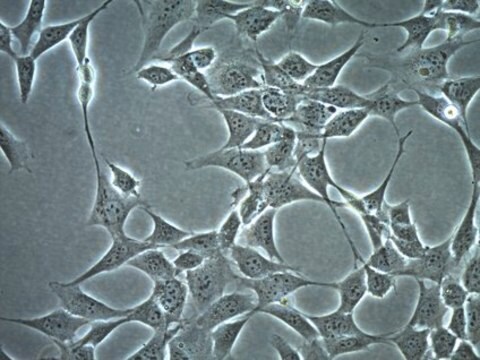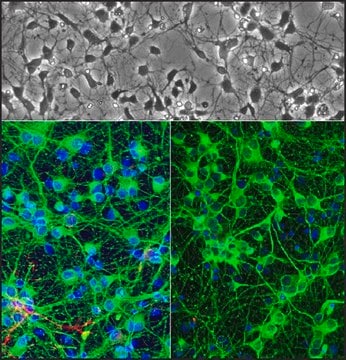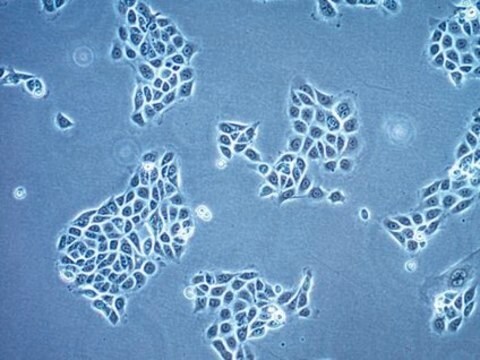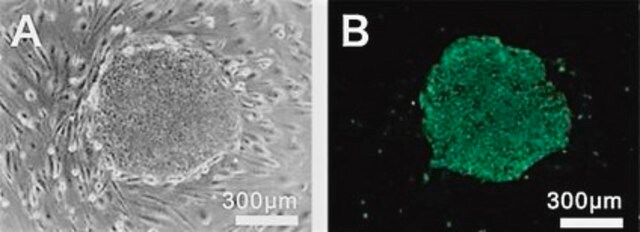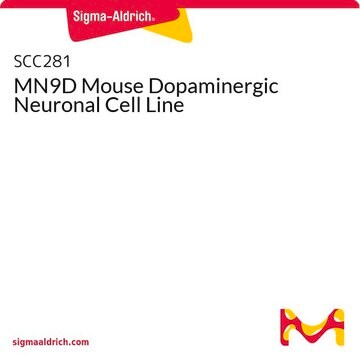推荐产品
生物源
mouse brain
包裝
tube of 5 μg 07062902-DNA-5UG
pkg of vial of cells 07062902-1VL
增長模式
Adherent
染色體組型
Not specified
形態學
Neuronal
產品
Not specified
受體
Not specified
技術
cell culture | mammalian: suitable
運輸包裝
dry ice
儲存溫度
−196°C
細胞系來源
Mouse multipotent neural progenitor or stem-like cells
細胞系描述
An immortalised mouse neural progenitor cell line capable of differentiation in vitro. The cell line was established by retorviral-mediated transduction of the avian myc oncogene into mitotic progenitor cells of neonatal mouse cerrebellum. Mouse strain CD1 x C57BL/6. This cell line is a valuable tool for in vitro and in vivo studies aimed at understanding the control of cell fate and differentiation of neural progenitors. The MMLV retrovirus vector used for the immortalisation process contained a neo resistance gene transcribed from an internal SV40 promoter. Therefore the cells are neo resistant. The morphology of the cells may change over time. Cells plated at low density may tend to become more process bearing whereas those plated more densely may tend to become flat and non-process bearing.
培養基
DMEM + 2 mM Glutamine + 10% Fetal Bovine Serum (FBS). Flasks should be pre-coated with poly-L-lysine at 10 μg/ml in sterile distilled water.
例行更新培養
Feed cells weekly with 50% conditioned medium and 50% fresh medium or split 1:10-1:20 in fresh medium using trypsin/EDTA. 5% CO2; 37 °C. Split sub-confluent cultures 1:10 - 1:20, i.e., seeding at 2-4 x 10,000 cells/cm2. Flasks should be pre-coated with poly-L-lysine at 10 μg/ml in sterile distilled water. Cells can be split as dilute as 1:50, but the phenotype may change, i.e., cells may appear flat with an epithelial-like morphology which usually do not stain for neurofilament or GFAP.
其他說明
Additional freight & handling charges may be applicable for Asia-Pacific shipments. Please check with your local Customer Service representative for more information.
我们的科学家团队拥有各种研究领域经验,包括生命科学、材料科学、化学合成、色谱、分析及许多其他领域.
联系客户支持